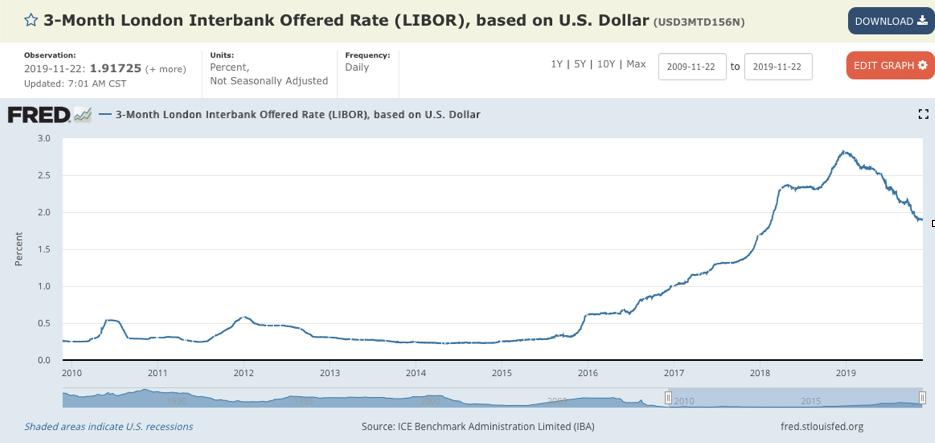Please Note: New variable rate ELFI loans applied for after 7:00 PM EST on January 7, 2022, will use the Prime Rate of Interest appearing in the Money Market section of the Wall Street Journal (WSJ) as the benchmark rate index. Borrowers who have an existing variable rate ELFI loan(s) that use the London Interbank Offered Rate (LIBOR) as the benchmark rate index will continue to have LIBOR as the benchmark rate index on their loans. ELFI will notify borrowers with existing variable rate loans originated prior to 7:00 PM EST on January 7, 2022, of the expected change from LIBOR to an alternative benchmark rate index in the future.
If you decide to refinance your student loans, you’re likely looking for the lowest interest rate possible. If you want to pay off your debt aggressively, you may get a lower rate by opting for a variable rate loan rather than a fixed-rate loan.
While a variable rate loan may be a smart choice, it’s important to understand how lenders determine your interest rate and what factors may influence it, such as the LIBOR rate.
Continue reading to learn more about the LIBOR rate and how it affects your student loan repayment.
What is LIBOR?
To understand LIBOR, you must first understand Eurodollars. Eurodollars are bank deposit liabilities — written as U.S. dollars — that don’t fall under U.S. banking regulations. Banks that offer Eurodollars are usually located outside of the United States, and play a big role in the financial industry.
The London Interbank Offered Rate (LIBOR) is a money market interest rate that is considered to be the standard in the interbank Eurodollar market. It’s a market for banks and financial institutions, rather than individuals. The LIBOR rate is the rate at which international banks are willing to offer Eurodollar deposits to one another.
That all may sound very complex and confusing, and you may be wondering why it matters to you. But the LIBOR rate can affect you directly. Many adjustable-rate loans and lines of credit, such as mortgages, credit cards, and student loans, base their interest rates on the LIBOR rate.
How LIBOR affects your variable rate loans
When you apply for a loan, you can often choose between a fixed-rate loan and a variable rate loan. A fixed-rate loan has the same interest rate for the length of your repayment. It never changes, no matter what the market does. By contrast, variable rate loans usually have lower rates than fixed-rate loans for the same term at first. However, they can fluctuate over time to coincide with market changes.
If you have variable rate student loans, changes to the LIBOR impact the interest rate you’ll pay on the loan throughout your repayment.
Private student loans, including refinancing loans, have interest rates that are tied to an index, such as LIBOR. But that’s not the rate you’ll pay. The lender also adds a margin that is based on your credit; the better your credit, the lower the margin
Your annual percentage rate, or APR, is a way of measuring the full cost a lender charges you per year for funds, and is expressed as a percentage. Your APR can be determined by adding the LIBOR rate to the margin, and including the cost of other fees and charges (if any exist) averaged over the term of the loan. If the LIBOR rate increases, the interest rate on your student loan will increase as well.
LIBOR Rate + Margin = Your Interest Rate
There are different maturities for LIBOR, including overnight, one week, one month, two months, three months, six months, and twelve months. Some student loan companies, including ELFI, adjust their interest rates every quarter based on the three-month LIBOR rate, while others adjust rates monthly as their loans are tied to the one-month LIBOR.
The LIBOR rate can fluctuate a great deal. However, most private student loan companies have caps on the interest rate, meaning your interest rate will never exceed that amount, no matter how high the LIBOR rate becomes.
Current LIBOR rates
As of Friday, November 22, 2019 — the last available data — the LIBOR rate is 1.917%. If the lender sets their margin at 3%, your new rate would be 4.917% (1.917% + 3.00%=4.917%).
The current LIBOR rate is significantly lower than it was at the beginning of 2019. On January 2, 2019, the LIBOR rate was 2.79%.
LIBOR rate trends
The LIBOR rate rises and falls along with market changes. Over the past 10 years, the three-month LIBOR rate has generally increased.
On December 2, 2009, the LIBOR rate was just 0.255%. As of November 22, 2019, the rate was 1.917%. If you had a variable rate loan during that time, that change means your rate would have risen by 1.662%.
 The chart above displays fluctuations to the 3-month LIBOR based on the U.S. dollar from 2010-2019.
The chart above displays fluctuations to the 3-month LIBOR based on the U.S. dollar from 2010-2019.
Future of LIBOR
LIBOR has been the gold standard that lenders have used for years to determine their rates. However, LIBOR is slowly being phased out and will be replaced with a new index.
LIBOR is based on transactions that aren’t as common as they used to be, so the index is considered to be less reliable than it once was. LIBOR is expected to be discontinued sometime after 2021.
How will that affect interest rates? The Federal Reserve has convened a committee to facilitate the transition and has recommended a new index to replace LIBOR. Lenders will likely replace LIBOR with the recommended index, or with the U.S. Prime Rate. Be sure to check your student loan documents (typically your Application & Credit Agreement) to better understand the terms of replacing the LIBOR index with a replacement index if you have a variable rate loan.
Managing your debt
If you’re planning on refinancing your student loans and are trying to decide between a fixed-rate loan and a variable rate loan, learning about the LIBOR rate can help you make an informed choice. If you want to see how much money you can save with refinancing and what interest rate you can qualify for, use ELFI’s Find My Rate tool to get a quote.*
*Subject to credit approval. Terms and conditions apply. Variable rates may increase after closing.
Notice About Third Party Websites: Education Loan Finance by SouthEast Bank is not responsible for and has no control over the subject matter, content, information, or graphics of the websites that have links here. The portal and news features are being provided by an outside source – the bank is not responsible for the content. Please contact us with any concerns or comments.



